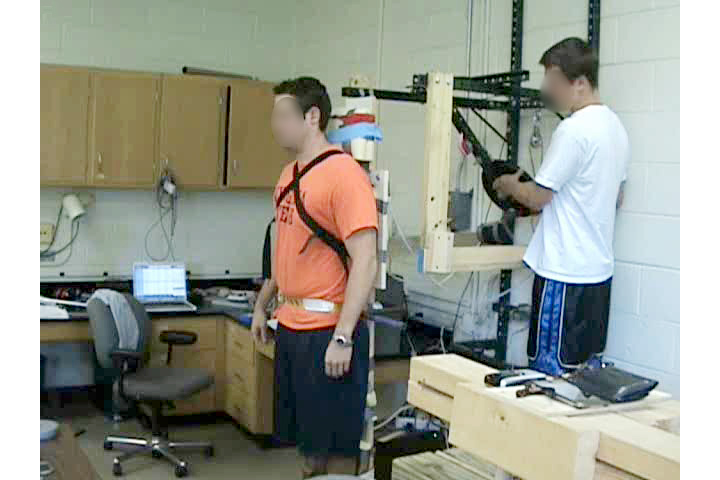Effects of obesity and age on balance and fall risk – Implications for safety guidelines
(from left) Standing, Bump, Trip, Slip

Goals & Objectives
Falls are a significant cause of occupational morbidity and mortality. Arguably the two most important contemporary demographic trends in the United States are the aging of the population and the increasing prevalence of obesity. As such, the number of older and/or obese workers in the US is growing. While there is extensive evidence showing an increased risk of falls in older adults, none of this research has been translated into fall prevention or safety guidelines for older workers. In addition, recent studies, along with our pilot work, indicate that obesity increases the risk of falls; yet, no specific safety recommendations have been established that account for the distinct risks among obese workers.
Based upon these needs, the goals of this project are to: 1) more fully characterize the effects of age, obesity, and their interaction on balance and risk of falls, and 2) provide data that, along with existing evidence, can be used by policy makers to develop more inclusive safety guidelines and/or designs that account for the balance abilities of older and obese workers.
Study participant (left) in the experiment setting

Project Approach & Activities
Two specific aims are proposed. The first aim will determine the effects of obesity and increased age on risk of slipping, tripping, and losing balance during simulated construction work. Our focus is on slips, trips, and loss of balance because they are among the most commonly reported contributing factors to falls in the workplace. This aim will also focus on realistic situations in construction work (i.e., work that has an inherent high risk for falls) that can lead to a slip, trip, or loss of balance, and that are amenable to safety guidelines to reduce fall risk. The second aim will determine the effects of obesity and increased age on balance and balance recovery after slipping and tripping.
Selected Outputs and Outcomes
The results from both aims will improve our understanding as to why obese and older workers are at an increased risk of falls. The results can also be used by policy makers to develop revised fall-prevention safety guidelines or designs for safety that are protective for obese and older workers.
Faculty and Facility
PI: Micael L. Madigan, Ph.D.; Co-Investigators: Maury A. Nussbaum, Ph.D., Michael J. Agnew, Ph.D., Daniel Hindman, Ph.D.
Student Researchers
Hoda Koushyar, Christina Rossi, John Scanlon, Leigh Allin
Former Students: Sara Matrangola, Ph.D. (post-doctoral researcher)
Funding Source
“Effects of obesity and age on balance and fall risk – Implications for safety guidelines”. NIOSH. (09/01/11 – 08/31/15). PI: M. L. Madigan, Co-Is: M. A. Nussbaum, M. J. Agnew, and D. Hindman. R01 OH009880
Sector: Cross Sector
Discipline: Slips/Trips/Falls
PI: Michael Madigan (Virginia Tech)
Co-Is: Maury Nussbaum (Virginia Tech), Michael Agnew (Virginia Tech), Daniel Hindman (Virginia Tech)


